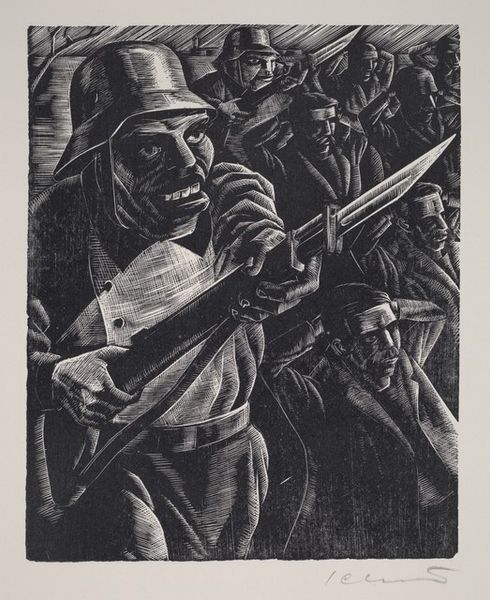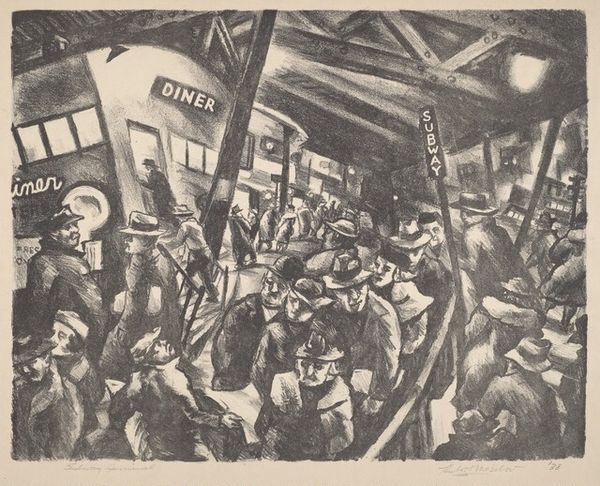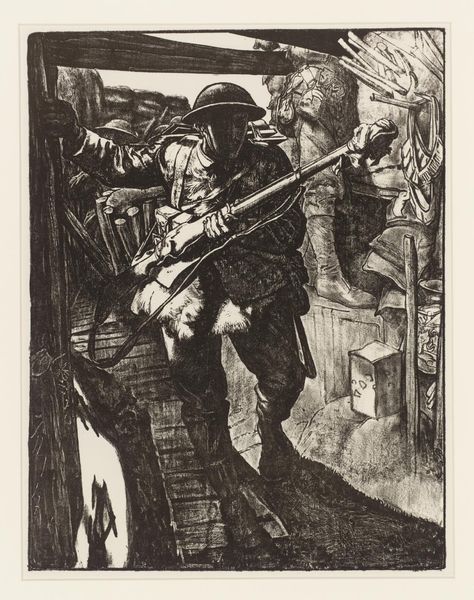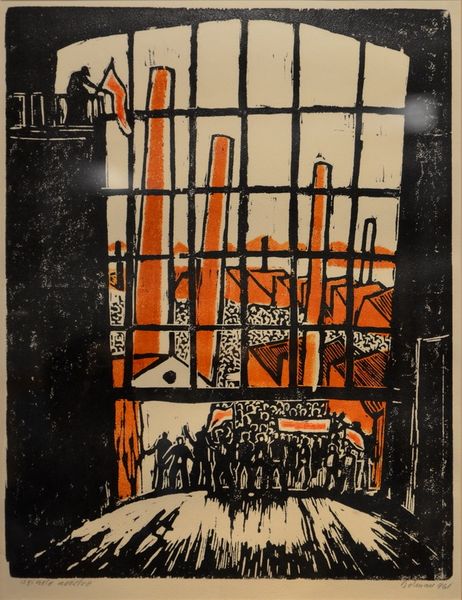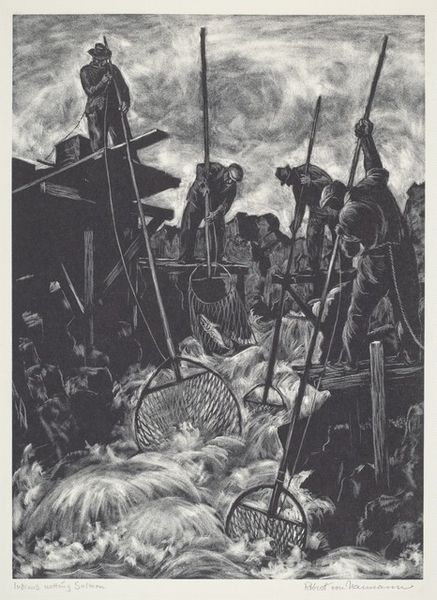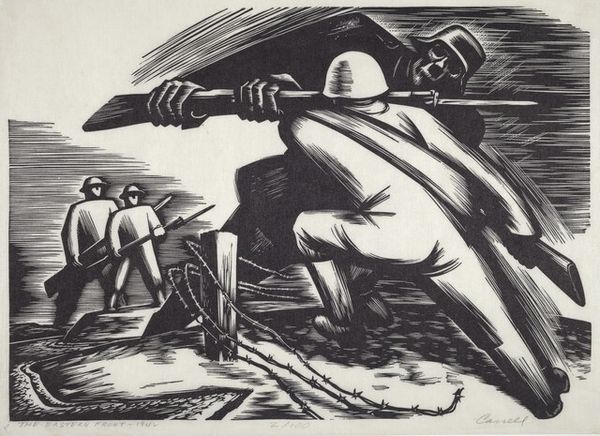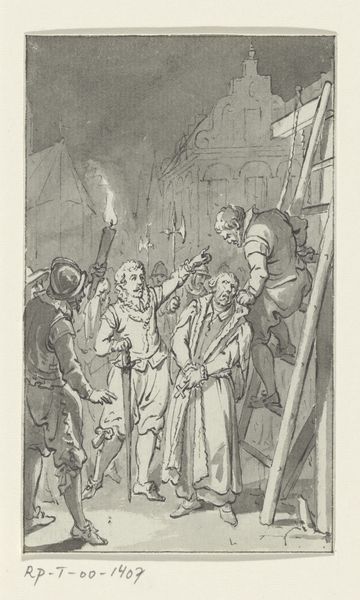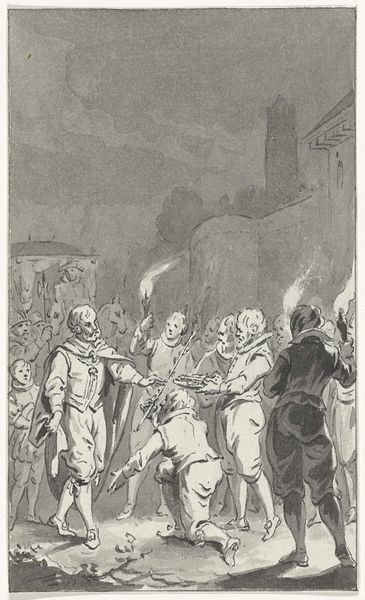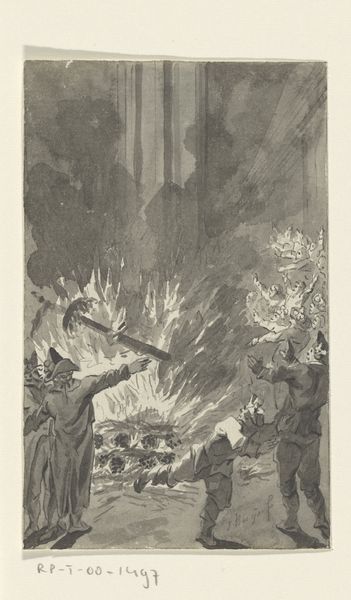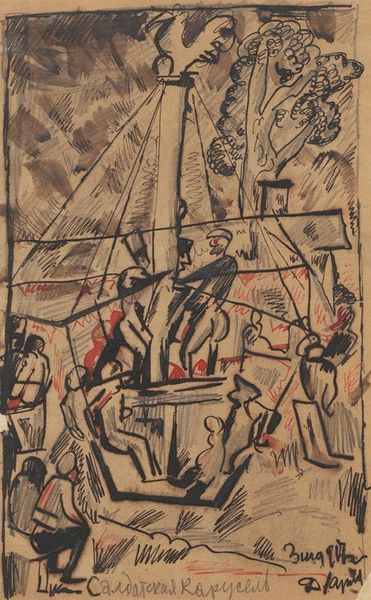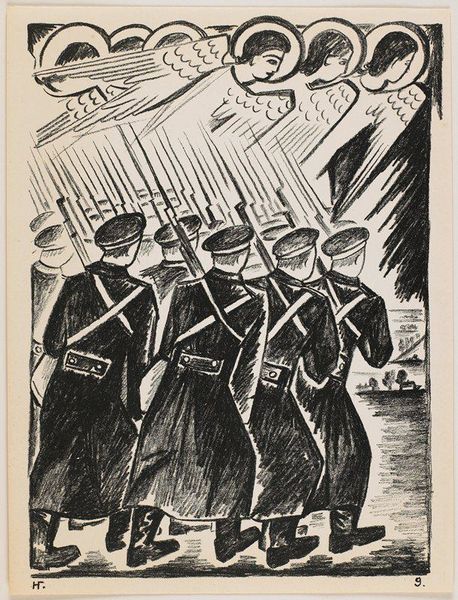
lithograph, print
#
lithograph
# print
#
figuration
#
genre-painting
#
realism
Dimensions: image: 395 x 315 mm sheet: 445 x 325 mm
Copyright: National Gallery of Art: CC0 1.0
Curator: Standing before us is Leonard Pytlak’s "Untitled (Foundry)," a lithograph dating from around 1946-1947. Editor: Immediately, I’m struck by the stark contrast. The dark silhouettes of the workers against the fiery glow create a dramatic tension. The scale is also compelling; it feels grand, imposing, even though it's a print. Curator: It is indeed, an emotionally potent work. Consider the tonal range achieved through the lithographic process, lending a rich depth to the fiery furnace and shadowy figures. The composition focuses on the verticality, directing the eye upwards toward the unseen ceiling of the foundry. Editor: And consider this work coming out of the postwar period. These foundries, essential for wartime production, represent both industrial power and the labor that built it. It's a stark reminder of the human cost behind progress. Are we celebrating progress, or lamenting what we have lost to build the industrialized landscape? Curator: Precisely. Pytlak uses realism, here, to highlight the dignity and importance of these labourers. But notice, also, the abstraction within the figures—their forms are simplified, almost archetypal, contributing to a universal statement about labour and industry. Note the use of line to create detail but also simplify the workers to the essentials of their shape. Editor: The scene almost borders on the allegorical; the fiery furnace, these anonymous workers toiling, feels less like a specific foundry and more like a broader comment about the age of industry. There's also an inherent duality, industry promising progress, while literally bathing its laborers in fire. Curator: Perhaps, also, look to Pytlak's previous work and the social realism movement for reference. It is plain that he sought to elevate genre-painting by means of his stark lines and symbolic arrangements. Editor: Seeing the totality of these different aspects creates a unique mood—hope mixed with worry, perhaps a symbol of a difficult time. It highlights how economic changes have always defined the lived experience of the working class, the men and women who drive societal growth. Curator: The artwork leaves us contemplating the complex interplay between industry, labor, and the individual. The medium and the visual relationships support the themes expressed here very nicely. Editor: A stark but fitting perspective on our not so distant history, well composed through the choices Pytlak makes. I believe these silhouetted figures shall remain with me.
Comments
No comments
Be the first to comment and join the conversation on the ultimate creative platform.
